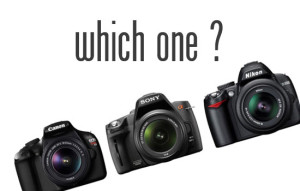
Determine Your Photography Needs and Budget
When buying a camera, consider your photography needs and budget first. For beginners, a mirrorless or DSLR camera with an interchangeable lens system is a good choice due to its versatility and ease of use. Popular entry-level options include Canon, Nikon, or Sony (APS-C Sensor) models. If you are more advanced, consider a full-frame camera for better image quality, especially in low light, such as the Sony A7 Series, Nikon Z series, or Canon EOS R series.
Choosing The Right Lens
When it comes to lenses, choose based on the type of photography you plan to pursue. A versatile zoom lens, like a 24-70mm f/2.8, is great for general use, while prime lenses, such as a 50mm f/1.8, offer excellent sharpness and low-light performance. For landscape photography, a wide-angle lens (e.g., 16-35mm) is ideal, while a telephoto lens (e.g., 70-200mm) is better for wildlife or sports photography. Don’t forget to consider additional features such as image stabilization, weather sealing, and autofocus speed.
If you travel frequently, consider investing in a versatile zoom lens, such as an 18-200mm, 18-300mm, or 24-240mm. These lenses offer a wide focal length range, combining wide-angle and telephoto capabilities in one convenient package. This allows you to carry just one lens and avoid missing shots while changing lenses. As you gain experience, you may want to invest in higher-quality lenses with larger apertures, such as f/1.2, f/1.4, f/1.8, or f/2.8. While these lenses can be quite expensive—sometimes costing more than the camera body—they are well worth the investment. High-quality lenses often deliver superior image quality, better low-light performance, and beautiful bokeh. Once you try them, you’ll notice a significant difference in your photos, making lenses one of the best investments for any photographer.
Research And Compare Prices
Before making a purchase, take the time to read reviews—Amazon is a great place to start for user feedback. Also, visit Best Buy or specialized camera shops to get a hands-on feel for the camera body, buttons, weight, size, and overall ergonomics. Remember, you’re investing in a camera that you might use for the next 4–6 years, so choosing one that feels comfortable and meets your needs is important. Once you’ve decided on a model, compare prices on reputable websites like eBay (look for top-rated sellers), B&H Photo, and Adorama.
Master The Art, Not Just The Gear
Remember, the photographer, not the camera, makes a great image. The camera and lens are just tools; it’s your vision, creativity, and skill that bring a photo to life. Mastering the art of photography comes from understanding composition, lighting, and storytelling—not just relying on high-end gear.
Want to know more about cameras, check their History
How old is my Camera? When was it replaced? What is the latest camera? What camera should you buy?
Click below to check where your camera stands
DSLR Cameras:
Mirrorless:
Canon Nikon Mirrorles Sony Mirrorless
Fujifilm Mirrorless Olympus/Panasonic Mirrorless
You already invested in equipment; now invest in knowledge, take my workshops



